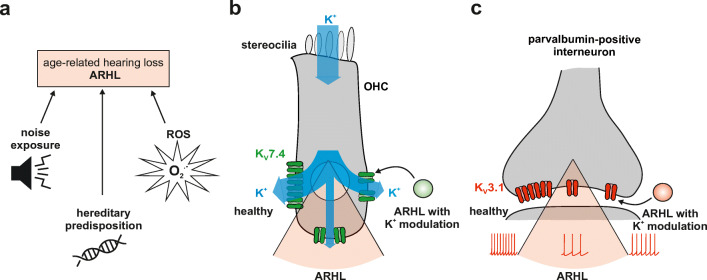Fig. 2.
a In the challenged auditory system leading to age-related hearing loss (ARHL), the key causing factors are postulated to be lifetime noise exposure, hereditary predisposition, and the accumulation of reactive oxygen species (ROS). b In a healthy outer hair cell (OHC), potassium ions (K+) enter the cell through apical mechanosensitive channels and are then transported to the supporting cells through KV7.4 (KCNQ4, green) channels on the basolateral membrane of OHC. However, in the challenged system, the expression of KV7.4 is reduced, resulting in a poor K+ efflux. This state can be influenced by the addition of K+ channel modulators (green circle) in a way where cell surface expression remains stable but the efflux rate can be increased. c In fast-spiking, parvalbumin-positive interneurons, KV3.1 (KCNC1, red) is required for the high-frequency repetitive firing. A decline in KV3.1 cell surface expression leads to an incapacity of neurons to maintain high-frequency firing action potentials. Modulators that bind to KV3.1 (red circle) may lower action potential latencies and duration and increase the firing pattern of these neurons

